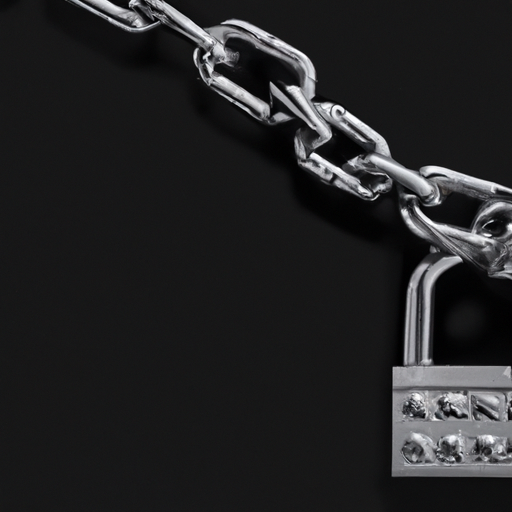What Is The Cost Of A Data Breach For A Business?
In today’s digital age, businesses are more vulnerable than ever to the detrimental effects of a data breach. But have you ever stopped to wonder just how much it could cost your business if such a breach were to occur? The reality is that the cost can be staggering, not only in terms of financial losses but also in terms of damage to your company’s reputation and customer trust. In this article, we will explore the true cost of a data breach for a business and examine the various factors that contribute to these expenses. Brace yourself, because the numbers may be higher than you ever imagined.
Overview of Data Breach Costs
Data breaches can have a significant impact on businesses, both financially and reputationally. The costs associated with a data breach can be direct, such as notification and legal fees, investigation and forensic analysis, and regulatory fines. Indirect costs may also arise, including the loss of customer trust and reputation, business disruption and downtime, increased cybersecurity investments, loss of intellectual property, and a devaluation of brand and market share.
Direct Costs of Data Breach
Notification and Legal Fees
When a data breach occurs, a business must take immediate action to notify affected individuals and comply with various legal obligations. This includes the cost of sending notifications, hiring legal counsel to ensure compliance with relevant laws and regulations, and any associated legal fees.
Investigation and Forensic Analysis
Identifying the root cause of a data breach and understanding its extent requires a thorough investigation and forensic analysis. This process involves specialized experts who can determine how the breach occurred, what data was compromised, and the potential impact on affected individuals. The costs of conducting these investigations can be significant, including fees for external cybersecurity firms and internal resources dedicated to incident response.
Remediation and Recovery
After a data breach, businesses must take immediate action to remediate the underlying vulnerabilities and strengthen their security measures. This may involve hiring additional IT staff or investing in new technologies to prevent future breaches. The costs associated with these remediation efforts can vary depending on the size and complexity of the breach, but they are often substantial.
Identity Protection Services
In the aftermath of a data breach, affected individuals may be at a heightened risk of identity theft and fraud. Offering identity protection services, such as credit monitoring or identity theft insurance, can help mitigate these risks and assist affected individuals in recovering from the breach. However, providing these services incurs additional costs for the business.
Regulatory Fines and Legal Damages
Data breaches often result in legal and regulatory consequences, including fines imposed by regulatory authorities and potential legal damages sought by affected individuals. These costs can be substantial, especially in cases where the breach resulted from negligence or non-compliance with relevant data protection laws. Businesses may also face potential lawsuits from customers, shareholders, or other stakeholders seeking compensation for the breach.
Indirect Costs of Data Breach
Loss of Customer Trust and Reputation
One of the most significant indirect costs of a data breach is the loss of customer trust and damage to a business’s reputation. When customers’ personal information is compromised, they may lose confidence in the company’s ability to protect their data. This loss of trust can result in customer churn, negative reviews, and a decline in new customer acquisition.
Business Disruption and Downtime
Data breaches can cause significant disruptions to business operations. The time taken to investigate the breach, remediate vulnerabilities, and restore systems can lead to business downtime and productivity loss. This can have a ripple effect on revenue generation, customer service, and overall business performance.
Increased Cybersecurity Investments
In response to a data breach, businesses often need to invest further in their cybersecurity infrastructure and practices. This can include upgrading existing security technologies, implementing additional layers of protection, and conducting regular vulnerability assessments. These investments come with associated costs, including hardware and software expenses, staff training, and ongoing maintenance.
Loss of Intellectual Property
In some data breaches, businesses may not only lose customer data but also valuable intellectual property. This can include proprietary technology, research and development data, trade secrets, or confidential business plans. The loss of such intellectual property can have long-term financial implications, as it may impact a company’s competitive advantage, market position, and potential for innovation.
Devaluation of Brand and Market Share
A data breach often leads to a loss of brand value and market share. Negative media coverage, customer dissatisfaction, and a damaged reputation can result in a decline in customer loyalty and trust. This, in turn, may lead to a decrease in sales, a loss of market share to competitors, and a long-term devaluation of the brand.
Factors Influencing Data Breach Costs
Magnitude of the Data Breach
The size and severity of a data breach can significantly influence the costs associated with it. A larger data breach with a higher number of affected individuals or compromised records may require more extensive notification efforts, forensic investigations, and identity protection services, resulting in higher costs for the business.
Data Types and Sensitivity
The types of data compromised in a breach and their sensitivity can impact the overall costs. Highly sensitive information, such as financial data or healthcare records, often requires additional regulatory compliance and stricter notification requirements. The potential for identity theft or fraud increases with the sensitivity of the data, leading to higher costs for identity protection services.
Response Time and Incident Management
How quickly a business responds to a data breach and the effectiveness of its incident management processes can also influence the costs. Prompt detection and containment of the breach can mitigate potential damages and reduce the need for extensive forensic analysis or customer notifications. Delays in response or ineffective incident management can escalate costs and worsen the overall impact.
Industry and Regulatory Environment
Different industries face varying levels of regulatory requirements and legal obligations regarding data breaches. Businesses operating in highly regulated industries, such as finance or healthcare, may face stricter notification requirements, higher fines, or additional legal consequences. The industry and regulatory environment can, therefore, influence the potential financial impact of a data breach.
Geographic Scope and Legal Jurisdiction
The geographic scope and legal jurisdiction where the data breach occurs can also affect the costs. Businesses operating internationally may be subject to multiple sets of data protection laws and regulations, each with its notification requirements, fines, and legal consequences. Complying with different jurisdictions’ requirements can increase the complexity and costs associated with the breach.
The Average Cost of a Data Breach
Global Data Breach Cost Trends
The average cost of a data breach varies across different regions and countries. According to industry reports, the global average cost of a data breach in 2020 was $3.86 million, with the United States having the highest average cost at $8.64 million. These costs include both direct and indirect expenses incurred by businesses following a data breach.
Regional Differences in Data Breach Costs
Data breach costs can differ significantly between regions due to variations in regulatory frameworks, market conditions, and the maturity of cybersecurity practices. For example, the cost per stolen record in the United States is higher compared to other regions, primarily due to the stringent regulatory environment and potential legal damages.
Industry-Specific Data Breach Costs
Different industries also experience varying costs when it comes to data breaches. Sectors such as healthcare and finance often face higher costs due to the sensitivity of the data they handle and the regulatory requirements they must adhere to. Industries that rely heavily on intellectual property, such as technology or manufacturing, may also incur significant costs if valuable information is compromised.
Cost per Stolen Record
Calculating the cost per stolen record can provide insight into the potential financial impact of a data breach. According to research, the average cost per stolen record globally was $146 in 2020. However, this figure can vary from industry to industry and across different regions, with some sectors experiencing significantly higher costs per record.
Risk Mitigation Strategies
Implementing Strong Security Measures
One of the most effective strategies for mitigating the costs of a data breach is to invest in strong security measures. This includes implementing robust cybersecurity technologies, regularly patching and updating software, and utilizing multi-factor authentication. By bolstering their security defenses, businesses can reduce the likelihood and impact of a breach.
Regular Employee Training
Employees play a crucial role in preventing data breaches and protecting sensitive information. Providing regular training on cybersecurity best practices, phishing awareness, and data handling protocols can empower employees to identify and report potential threats. Well-informed employees are better equipped to mitigate risks and respond effectively in the event of a breach.
Data Encryption and Access Controls
Encrypting sensitive data and implementing access controls can help safeguard information from unauthorized access or theft. By employing encryption technologies, even if data is stolen, it remains effectively useless to the perpetrator without the encryption keys. Controlling access to data based on job roles and responsibilities ensures that only authorized individuals can access sensitive information.
Incident Response Planning
Having a well-defined incident response plan in place is essential for minimizing the impact of a data breach. This plan should outline the steps to be taken in the event of a breach, including who to contact, the roles and responsibilities of key personnel, and the coordination of various response activities. By having a preplanned response, businesses can act swiftly and efficiently, reducing the overall costs and mitigating potential damages.
Insurance Coverage
Obtaining cybersecurity insurance can provide financial protection in the event of a data breach. Cyber insurance policies can cover various costs, including legal fees, regulatory fines, notification expenses, and identity protection services. It is important for businesses to carefully assess their cybersecurity insurance needs and select a policy that aligns with their risk profile and potential exposure.
Steps to Take After a Data Breach
Containment and Isolation
Upon discovering a data breach, it is crucial to immediately contain and isolate the affected systems or networks. This involves disconnecting compromised devices from the network, disabling user accounts associated with the breach, and securing the digital environment to prevent further unauthorized access. Swift containment can help prevent the breach from spreading and limit the potential damages.
Notification and Communication
Once the breach is under control, businesses must fulfill their legal obligations to notify affected individuals about the incident. This includes providing clear and timely information about what data was compromised, what potential risks exist, and any recommended actions individuals should take to protect themselves. Open and transparent communication is essential in rebuilding trust with affected customers and stakeholders.
Forensic Investigation
A thorough forensic investigation should be conducted to determine the extent of the breach, the vulnerabilities exploited, and any potential indicators of compromise that could affect future security. This involves leveraging specialized expertise and tools to analyze system logs, network traffic, and other relevant data sources. The findings of the investigation can inform the remediation efforts and help prevent future breaches.
Remediation and Recovery
Remediating the underlying vulnerabilities and strengthening security measures is critical to preventing future breaches. This may involve patching software vulnerabilities, updating security policies, enhancing access controls, and implementing additional safeguards. It is important to develop a comprehensive plan for remediation that addresses the root causes of the breach and ensures ongoing protection of data.
Post-Breach Evaluation
After the immediate response and remediation efforts, conducting a thorough post-breach evaluation is essential for identifying lessons learned and improving response capabilities. This evaluation should include a comprehensive review of the incident response plan, the effectiveness of security measures, employee training programs, and any areas for improvement. The insights gained from this evaluation can help inform future security strategies and prevent similar incidents.
The Importance of Preparedness
Creating a Data Breach Response Plan
Preparation is key to effectively managing a data breach. Businesses should proactively create a data breach response plan that outlines the necessary steps to take in the event of a breach. This includes identifying key personnel responsible for incident response, establishing communication channels, and documenting the processes and procedures to be followed. Having a well-prepared response plan significantly reduces response time and minimizes the potential impact of a breach.
Regular Testing and Simulations
To ensure the effectiveness of a data breach response plan, regular testing and simulations are essential. This involves conducting mock data breach scenarios to evaluate the preparedness of the organization, identify any gaps or weaknesses in the response plan, and provide employees with hands-on training in a controlled environment. Ongoing testing helps ensure that response procedures are up to date and that employees are familiar with their roles and responsibilities.
Engaging with Third-Party Experts
A data breach can be a complex and challenging event to manage. Engaging with third-party experts, such as cybersecurity consultants or incident response teams, can provide businesses with the necessary expertise and support during and after a breach. These experts can help with incident investigation, remediation efforts, regulatory compliance, and provide guidance on best practices to prevent future breaches.
Improving Cybersecurity Culture
Developing a strong cybersecurity culture within the organization is essential for preventing and mitigating the impact of data breaches. This involves fostering a mindset of security awareness among employees, promoting a sense of responsibility for protecting sensitive information, and creating an environment where reporting potential security incidents is encouraged. By making cybersecurity a priority throughout the organization, businesses can significantly reduce the risk of breaches.
Investing in Continuous Monitoring
Implementing continuous monitoring solutions can help detect and mitigate potential security threats before they escalate into full-blown data breaches. By monitoring network traffic, user behavior, and system logs in real-time, businesses can identify unusual activity or indicators of compromise. Continuous monitoring enables proactive threat detection and response, allowing for timely intervention to prevent or minimize the impact of breaches.
The Hidden Cost of Non-Compliance
Legal and Regulatory Consequences
Failure to comply with applicable data protection laws and regulations can result in severe legal consequences. Regulatory authorities may impose fines and penalties for non-compliance, which can vary depending on the jurisdiction and the nature of the breach. Being found non-compliant can also lead to heightened scrutiny from regulators, which may result in increased auditing and monitoring requirements for the business.
Financial Penalties and Damages
Businesses that fail to adequately protect customer data may face financial penalties and damages as a result of legal proceedings. Affected individuals or class-action lawsuits may seek compensation for the breach, alleging negligence, invasion of privacy, or other legal claims. These financial penalties and damages can add significant costs to the overall impact of a data breach.
Reputational Damage and Loss of Customers
A data breach can have a profound impact on a business’s reputation and customer trust. Negative media coverage, public perception of inadequate security measures, and customer dissatisfaction can lead to a loss of customers and potential revenue. Rebuilding a damaged reputation is a challenging and costly endeavor that may require extensive public relations efforts and changes in business practices.
Ongoing Compliance Program Costs
Maintaining an effective data protection and compliance program is an ongoing effort that incurs continuous costs. This includes conducting regular risk assessments, implementing security controls, training employees, and monitoring compliance with relevant laws and regulations. Failure to invest in a robust compliance program can increase the risk of non-compliance and subsequent costs associated with breaches.
Increased Scrutiny and Auditing
In the wake of a data breach, businesses often face increased scrutiny from regulators and auditors. This can result in more frequent and in-depth audits of the company’s security practices, IT infrastructure, and data handling procedures. Increased scrutiny adds additional resource requirements and costs associated with responding to audit requests and addressing any identified weaknesses or deficiencies.
Conclusion
Data breaches pose a serious business risk, both in terms of financial costs and reputational damage. Understanding the direct and indirect costs associated with data breaches is vital for organizations to prioritize cybersecurity investments and risk mitigation strategies. By implementing robust security measures, developing a comprehensive response plan, and investing in continuous monitoring, businesses can effectively prevent, detect, and respond to data breaches. Additionally, creating a strong cybersecurity culture, engaging with third-party experts, and maintaining compliance with applicable regulations are crucial steps in minimizing the impact of a data breach. Ultimately, preventing data breaches should be a top priority for every organization, as the costs and consequences can be detrimental to the long-term success and viability of the business.








